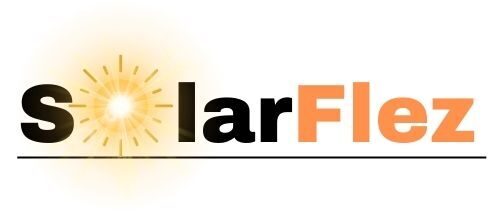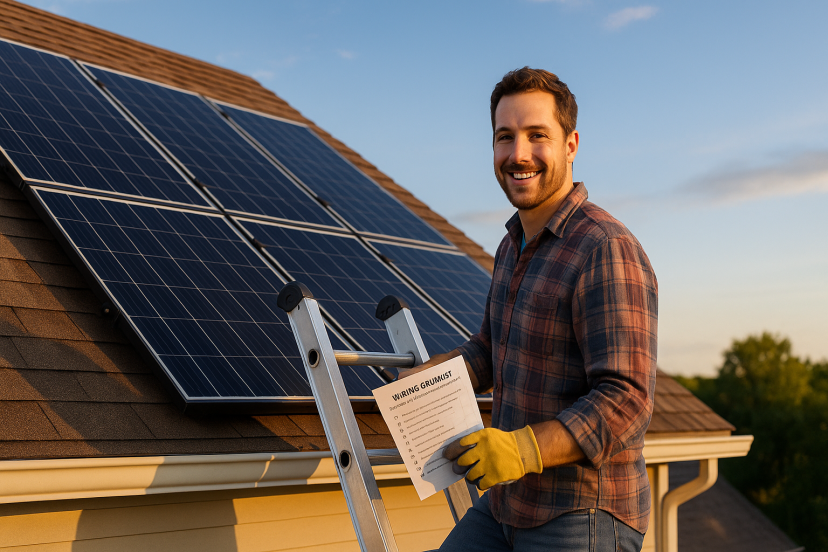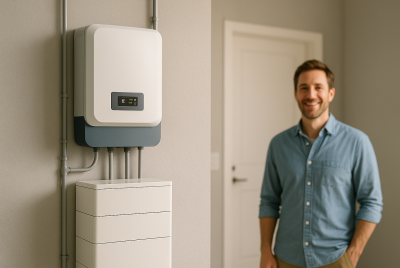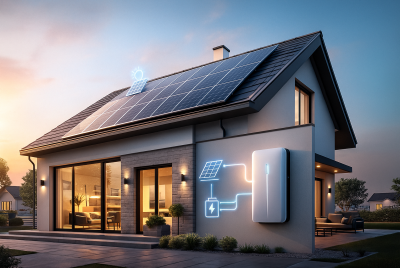Cheap Solar Panels: Smart Ways to Cut Costs (Without Regrets)
You want solar, but the quotes or kit prices made your eyebrow do the “Are you kidding me?” jump. I get it. The good news? Cheap solar panels can still be good solar panels—if you buy with a plan. In this guide, we’ll chat like friends about how to spot genuine value, avoid false economy, and pick budget-friendly panels that last.
You’ll learn how to compare price per watt (the most useful “apples-to-apples” metric), which affordable kits are worth it, how long payback might take, and what specs matter (and don’t). I’ll also share 5 vetted Amazon products with quick review snapshots so you can pick what fits your roof, rig, or budget.
Affiliate note: Some links below may earn a small commission at no extra cost to you. It helps keep the lights on—ironically powered by the sun. ☀️
What “Cheap” Should Mean (And What It Shouldn’t)
“Cheap” should mean low cost for solid performance, not “mystery brand with mystery warranty.” Focus on:
- Price per watt (PPW) as your baseline comparison
- Panel type & efficiency (mono panels are the value sweet spot for most)
- Warranty length and brand support
- Realistic output for your sunlight
U.S. benchmarks show solar costs keep trending down (modules, inverters, balance-of-system), which is why deals today can be legit—not too-good-to-be-true.
The One Metric You Can’t Ignore: Price Per Watt
Divide a panel’s price by its wattage. If a 200 W panel is $160, PPW = $0.80/W. Lower PPW is usually better—if warranty, build quality, and brand support are decent. Don’t sacrifice reliability to save a few cents per watt; failures erase savings fast. DOE/NREL cost benchmarks are your sanity check that falling prices are normal—not always a red flag.
Panel Types at a Glance (Budget Edition)
- Monocrystalline (mono): Today’s budget winner for rooftops and RVs. Good efficiency at fair prices.
- Polycrystalline (poly): Cheaper historically, but mono’s value caught up.
- Thin film: Lightweight/specialty uses; usually lower efficiency per area.
DOE’s PV overview gives the big picture on where costs are headed (residential targets ~5¢/kWh long-term)—helpful context when comparing deals.
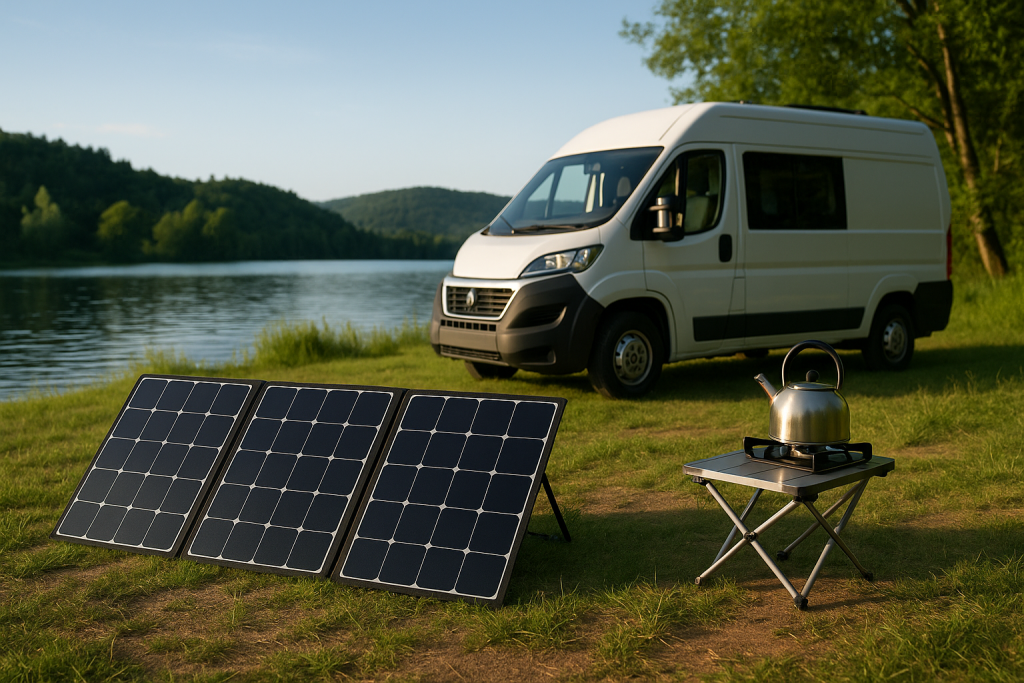
Are Budget Panels Reliable?
Global PV capacity is booming, which has pushed manufacturing scale and lowered module prices while quality holds up for known brands. (IEA notes PV drives the bulk of renewables growth.) Translation: affordable ≠ junk by default—just pick established brands and check warranties.
Quick Reality Check: Payback on a Budget
Lower PPW = lower upfront cost and quicker payback, especially if you DIY portions safely (permitted where required). Use conservative output estimates and include racking, wiring, and any storage. NREL’s cost workups show BOS (balance of system) can be a big slice—so a super-cheap module won’t save the day if the rest is overpriced.
How to Compare Budget Panels Fast
Checklist:
- PPW at today’s price
- Module warranty (product + performance)
- Cell design (9BB/10BB can improve current collection)
- Frame & glass build, certifications
- Real user feedback (patterns, not one-off reviews)
When “Used” or “Refurb” Makes Sense
Decommissioned commercial panels can be super cheap—but inspect carefully, confirm degradation rates and remaining warranty (if any). Panels typically degrade ~0.6–1%/yr, so a 5–8-year-old module may still be very usable; just price accordingly.
Portable vs. Fixed: Which Is Cheaper?
- Fixed rooftop/ground-mount: Lowest PPW, best for homes and cabins.
- Portable/foldable panels: Pricier per watt but perfect for RV, camping, emergency backup, and renters.
Recent deal waves on portable sets (like solar generators + foldables) can temporarily narrow the gap—watch for sales.
5 Affordable Amazon Picks (Budget, But Not Barebones)
Tip: Prices swing. Use the PPW math and the comparison table below to judge current value.
1) Renogy 200W 12V Solar Starter Kit (Panels + Controller)
A well-known starter kit for cabins, RVs, and sheds. Renogy claims ~1,000 Wh/day under about 5 hours of sun—handy baseline for small loads. Includes essentials to get you producing quickly.
Best for: First-timers who want simple + reputable.
Features
- 2×100 W mono panels, 30A controller, mounting hardware
- Bypass diodes for shade resilience; up to ~22% cell efficiency (listing)
Pros
- Trusted brand; easy path to first install
- Clear starter bundle reduces shopping time
Cons
- Controller may be basic vs. an MPPT upgrade
- Battery/inverter not included (consider their bundle options)
Review Snapshot
Owners praise straightforward setup and solid output for fridges/lights in RVs. Occasional complaints: controller limitations or shipping dings.
2) ECO-WORTHY 400W 24V Complete Kit (Panels + Inverter + Battery Options)
A budget powerhouse kit with multiple SKUs (some include LiFePO₄ battery and 2000 W inverter). Their 400 W set advertises ~1.6 kWh/day under ~4 hours of sun—enough for essentials.
Best for: Cabins, tiny homes, sheds needing “one-and-done” bundle.
Features
- Up to 4×100 W panels, MPPT controller, wiring/mounts
- Some bundles: 24V 100Ah LiFePO₄ + 2000 W inverter (off-grid)
Pros
- Big daily output for the price
- MPPT option boosts harvest; lithium-ready kits available
Cons
- Component variations by SKU—read carefully
- Support can be basic vs. premium brands
Review Snapshot
Fans love the value and “runs my essentials” performance. Complaints focus on documentation clarity and shipping.
3) BougeRV 200W Mono (9–10BB / Bifacial Options)
BougeRV’s 200 W panels are compact for their class and offer 9–10 busbars; some models are bifacial for extra gain. Popular with RVers and DIYers for stiffness and decent PPW.
Best for: RVs/boats/cabins where panel size matters.
Features
- 200 W mono module; 9–10 BB busbars; some bifacial variants
- Stated ~23% cell efficiency on some listings (model-dependent)
Pros
- Good size-to-power ratio
- Bifacial option can add meaningful energy
Cons
- Warranty/availability vary by listing/region
- Bifacial gains depend on mounting and albedo
Review Snapshot
Praised for sturdy frames and easy mounting; occasional notes on availability or shipping.
4) Jackery SolarSaga 100W (Classic & New Bifacial)
The go-to portable panel: now with a bifacial version that harvests from both sides. Higher PPW than fixed panels, but unbeatable convenience for renters, RVs, and emergencies.
Best for: Portable power with Jackery stations or DIY tricks.
Features
- Classic 100 W foldable; new bifacial model claims up to ~30% boost (listing)
- Kickstands, carry handle; some versions rated IP68
Pros
- Super easy setup and storage
- Quality build; frequent promos
Cons
- Higher cost per watt than fixed panels
- Works best paired with a power station
Review Snapshot
Users love the speed and simplicity; minor complaints about price during non-sale periods. (Watch for discounts.)
5) Newpowa 200W Mono (9–10BB)
Newpowa’s 200 W modules deliver straightforward value with modern busbar designs. Solid option for budget rooftops, cabins, and marine installs.
Best for: Budget fixed installs on RVs/cabins/boats.
Features
- 200 W mono, 9–10BB, tempered glass & aluminum frame
- Typical 12 V system compatibility; clear dimensions/weight listed
Pros
- Competitive PPW; wide community use
- Easy to mix in parallel/series for system growth
Cons
- No-frills warranty/support compared to premium brands
- Heavier than portable/flex alternatives
Review Snapshot
Stable output and fair pricing get kudos; occasional shipping and stock notes.
Comparison Table (At-a-Glance)
| Model | Key Spec(s) | Warranty* | Approx Price/Tier | Best For |
| Renogy 200W Starter Kit | 2×100 W mono, 30A controller, mounts | Brand-backed | $$ | First-time DIY, RVs, sheds |
| ECO-WORTHY 400W Kit | 4×100 W + MPPT; options w/ LiFePO₄ & 2000 W inverter | Varies by SKU | $–$$ | Cabins/tiny homes needing a bundle |
| BougeRV 200W (9–10BB) | Compact 200 W; bifacial option | Varies by listing | $–$$ | Space-tight installs (RV/boat) |
| Jackery SolarSaga 100 (bifacial) | Portable 100 W; up to ~30% gain vs. single-side | Brand-backed | $$ | Renters, campers, emergency kits |
| Newpowa 200W Mono (9–10BB) | Standard 200 W mono; rugged frame | Brand-backed | $ | Budget rooftops/ground/RV |
*Check each Amazon listing/SKU for current warranty terms.

How Many Watts Do You Actually Need?
Start with a simple load list:
- Daily watt-hours (e.g., laptop 60 W × 3h = 180 Wh)
- Add everything: lights, router, fridge, fans
- Divide by sun hours (e.g., 4–5 “peak” hours) to estimate array size
- Add 15–25% headroom for losses and cloudy days
For rough O&M expectations, NREL’s residential PV data points to manageable annual costs—your main decision is how much energy you truly need.
Money-Saving Tips That Don’t Backfire
- Buy panels in pairs or kits to lower PPW.
- Use MPPT on 400 W+ arrays; it pays back in better harvest.
- Mind the wire gauge & voltage drop—cheap wire wastes watts.
- Roof space? Consider slightly higher-efficiency mono to shrink racking costs.
- Portable strategy: snag sale events for panels + power stations.
⚖️ DIY vs. Pro Install (Budget Perspective)
- DIY (permitted & safe): Lowest cost, great for cabins/RVs.
- Pro install: Higher upfront but cleaner permitting, faster interconnect, warranty peace of mind—often worth it for grid-tie homes where incentives apply.
DOE/NREL benchmarks show that soft costs and BOS can rival panel costs; a pro who optimizes design and paperwork can erase “DIY savings” if you’d struggle through the admin.
🧪 Research-Backed Snapshot (Why Prices Are Lower—and Staying There)
- Global scale drives affordability. IEA reports that from 2024–2030, solar PV accounts for ~80% of renewable capacity growth, reflecting a mature supply chain and lower module pricing. Even with forecast adjustments, PV remains the main driver.
- Renewables are undercutting fossil costs. IRENA (2024 data, reported 2025) notes ~91% of new renewables beat fossil alternatives on cost—solar included—thanks to technological improvements and larger manufacturing scale.
For the big-picture market pulse, the IEA PVPS Trends 2025 shows cumulative global PV surpassing 2,260 GW by end-2024—a market mature enough that “cheap” can be legitimate when you pick reputable brands.
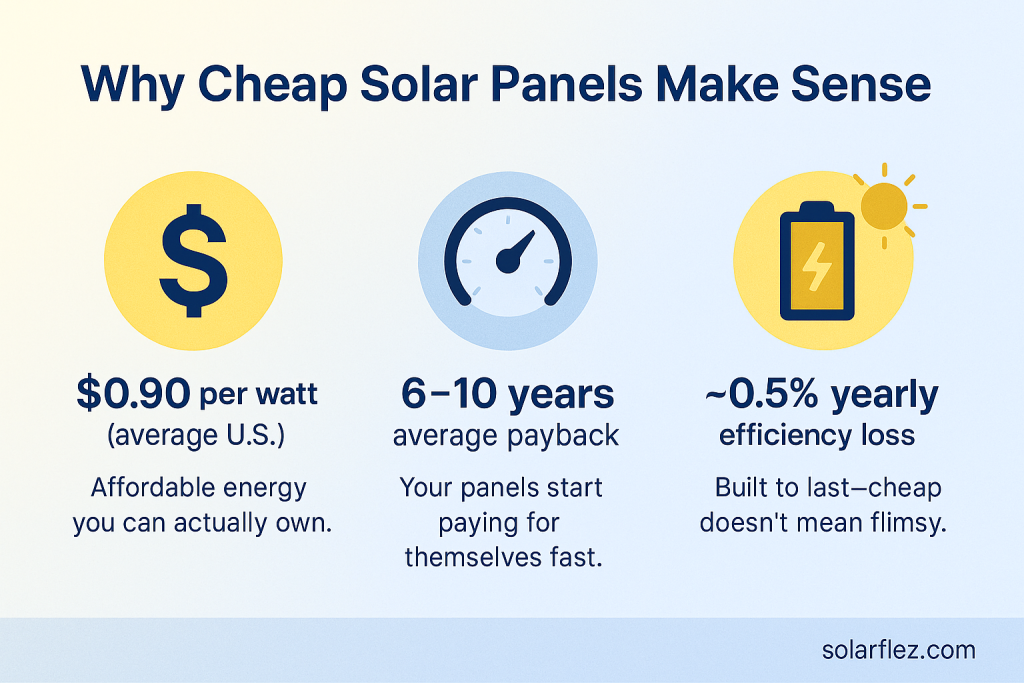
Helpful Resource for Next-Gen Bargains
Curious why perovskite tech keeps making headlines (and what it might mean for future prices)? Check out this plain-English guide to perovskite solar panels—they’re not mainstream on rooftops yet, but they’re shaping the next cost wave.
FAQs (Schema-ready)
Are cheap solar panels worth it for homes?
Yes—if you pick known brands with real warranties and factor BOS (racking, wiring, inverter) into total cost. Use PPW to compare, but don’t ignore support and longevity. DOE/NREL data confirms system costs keep improving.
How many watts do I need to run essentials?
List your daily watt-hours (Wh), divide by sun hours (4–5 typical), then add 15–25% headroom. For cabins/RVs, 400–800 W often runs lights, laptops, fans, and a DC fridge (usage varies).
Is portable solar a waste of money?
Not at all—it’s a different tool. Portable panels cost more per watt but shine for renters, campers, and emergencies. Watch for bundled sales to improve value.
What’s a good price per watt right now?
It changes weekly. Use our PPW math and compare similar products (mono vs. mono, kit vs. kit). Check warranty and brand reputation; pennies saved per watt don’t matter if support is poor. Reference public benchmarks for sanity.
Do solar panels degrade quickly?
Not typically. Studies suggest ~0.6–1%/year degradation on average—one reason quality matters even when you’re bargain-hunting.
Wrap-Up: Spend Less, Get More Sun
If your goal is cheap solar panels that actually perform, you’re looking for low PPW + decent warranty + brand you trust. Kits like Renogy and ECO-WORTHY simplify the first build; BougeRV and Newpowa stretch dollars on fixed arrays; Jackery’s portable lineup keeps renters and campers powered without drilling a hole anywhere.
Take a deep breath, run the PPW math, and start small if you need to. Every watt you install is one step closer to lower bills and more independence. You’ve got this. And hey—your future self will thank you the next time the lights flicker and your battery… doesn’t.
